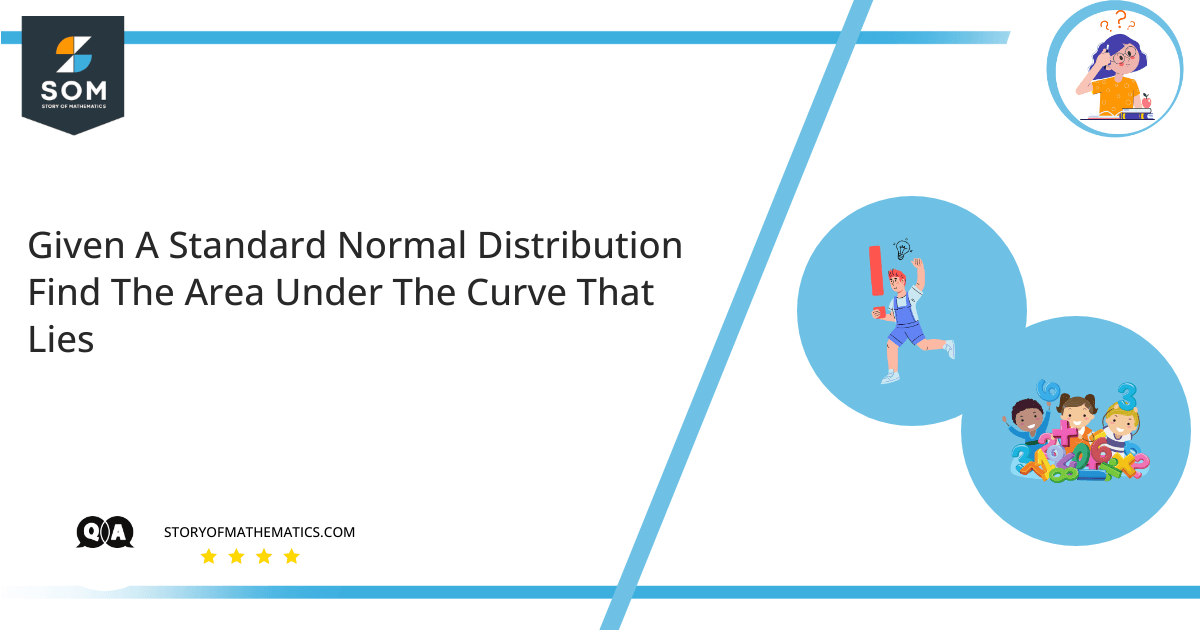
This article aims to find the area under the curve for a standard normal distribution. A normal probability table is used to find the area under the curve. The formula for the probability density function is:
\[ f ( x ) = \dfrac{ 1 }{ \sigma \sqrt 2 \pi } e ^ {-\dfrac{ 1 }{ 2 } ( \dfrac { x -\mu}{\sigma}) ^ {2}} \]
Expert Answer
Part ( a )
Let’s find the area under the curve to the left of $ z = – 1.39 $. So we need to see $ P( Z< – 1.39 )$, where $ Z $ represents a standard normal random variable.
Using a normal probability table, we easily obtain:
\[P( Z< – 1.39 ) = 0.0823 \]
Part ( b )
Let’s find area under the curve that lies to right of $ z = 1.96 $. So we need to determine $ P( Z > 1.96 )$, where $ Z $ represents a standard normal random variable.
Using a normal probability table, we easily obtain:
\[P( Z > 1.96 ) = 1- P ( Z < 1.96) \]
\[ = 1 – 0.9750 \]
\[P ( Z > 1.96) = 0.025 \]
Part ( c )
Let’s find area under the curve that lies between $ z = – 2.16 $ and $ z = -0.65 $. So we need to find $ P( -2.16 < Z< – 0.65 )$, where $ Z $ represents a standard normal random variable.
Using a normal probability table, we easily obtain:
\[P(-2.16<Z<- 0.65 )=P(Z < -0.65 ) – P(Z < -2.16 ) \]
\[=0.2578-0.0154\]
\[P(-2.16<Z<- 0.65 )=0.2424 \]
Part ( d )
Let’s find area under the curve that lies to the left of $z=1.43 $. So we need to find $P(Z<1.43 )$, where $ Z $ represents a standard normal random variable.
Using a normal probability table, we easily obtain:
\[P(Z<1.43 )=0.9236\]
Part ( e )
Let’s find area under the curve that lies to the right of $ z=-0.89 $. So we need to find $ P(Z>-0.89 )$, where $ Z $ represents a standard normal random variable.
Using a normal probability table, we easily obtain:
\[P( Z>-0.89 ) = 1- P (Z<-0.89) \]
\[=1-0.1867 \]
\[P( Z>-0.89 )=0.8133\]
Part ( f )
Using a normal probability table, we easily find:
\[P(-0.48 < Z < 1.74 ) = P(Z < 1.74) – P(Z<-0.48)\]
\[=0.9591-0.3156\]
\[P(-0.48 < Z < 1.74 )=0.6435\]
Numerical Result
(a) \[P( Z< – 1.39 ) = 0.0823 \]
(b) \[P(Z>1.96)= 0.025 \]
(c) \[P(-2.16<Z<- 0.65 )=0.2424 \]
(d) \[P(Z<1.43 )=0.9236\]
(e) \[P( Z>-0.89 )=0.8133\]
(f) \[P(-0.48<Z<1.74 )=0.6435\]
Example
Find area under the curve that lies for the standard normal distribution.
(1) to the left of $z = -1.30$.
Solution
Let’s find the area under the curve to the left of $ z = – 1.30 $. So we need to find $ P( Z< – 1.30 )$, where $ Z $ represents a standard normal random variable.
Using a normal probability table, we easily obtain:
\[P( Z< – 1.30 ) = 0.0968 \]
